1 Factors Affecting Residential Satisfaction In Low-Income Housing PRESENTATION BY ABDULMAJEED KABIR MUSTAPHA M.Sc. Architecture S017374 Department of Graduate of Sciences and Engineering OZYEGIN UNIVERSITY 10 - August - 2022 A Case Study of War College Housing in Gwarinpa Estate - Abuja, Nigeria Advisor; Assoc. Prof. Murat Şahin, Advisor Ass. Advisor; Dr. Ebru Karahan
GREETINGS ALL
Assoc. Prof. Murat Şahin, Özyeğin University
Asst. Prof. Ebru Karahan, Özyeğin University
Assoc. Prof. Nilay Ünsal Gülmez, Bahçeşehir University
Asst. Prof. Mehmet Saner, Özyeğin University
Asst. Prof. Pınar Sezginalp, Özyeğin University
2
INTRODUCTION
TABLE OF CONTENT
LITERATURE REVIEW
RESEARCH & METHODOLOGY
RESEARCH FINDINGS
DISCUSSION & CONCLUSION
THANK YOU
3
INTRODUCTION
4

5
Presentation Road map
Background of Research
- The background of this research is hence based on the factors affecting residential satisfaction in Abuja, Nigeria. What do you mean
Purpose of Study
- To understand the meaning of residential satisfaction from different contexts through literature review
- To assess the factors that affect residential satisfaction of home dwellers
Research Questions
- To what extent residential satisfaction is achieved in low- income housing dwellings provided by the Federal Housing Authority, Abuja.
- To what extend the consequences of the factors affect the occupants
Research Aim
Study Limitations
- This research aims to contribute to the existing literature by providing results of a survey and site analysis essential in this aspect of the study.
- Limited access to updated data; in spite of requesting required housing data from the Federal Housing Authority
- outdated information of housing was obtained as most housing projects now differ from the initial proposed settlement
- Presence of COVID-19 hindered surveys carried out in the project
6
LITERATURE REVIEW
7
RESIDENTIAL SATISFACTION IN A NUTSHELL
Low-income housing is the provision of housing by the government for civil occupancy or low-income earners. Even though public housing development policies are geared toward the satisfaction of housing occupants, the experience of building users was highly ignored.

In assessing residential satisfaction of dwellers, there is need to evaluate precise housing units within a particular setting which is managed by a sole management body. Literature describes residential satisfaction as;
• Residential satisfaction (RS) is a sign of the quality of livelihood because it shows the needs of the residents have been met.- Waziri,A.G,Yusof,N,Salleh,,2013.
• Residential Satisfaction (RS) is quantified by the suitability of the residential environment, facilities, services, and surroundings must be tailored to the housing dwellers - Salleh, A. G. (2008)
• Residential satisfaction (RS) is affected by more than just engineering elements but also by social, behavioral, traditional and other elements in the whole of society’s environmental system - Onibokun, A.G., (1974)
Residential satisfaction (RS) is a sign of the quality of livelihood because it shows the needs of the residents have been met. A higher level of RS shows dwellers are highly satisfied with their houses. Studies noted that residential satisfaction in many cases has improved the quality of life of dwellers.
WHAT IS RESIDENTIAL SATISFACTION?
The ideology of housing solely depends on an individual’s perception of what a home should feel like. It comprises various physical and social elements that build up the housing system.
RS can provide residents with a sense of attachment and closure to their homes. Jiboye observed that in developing countries like Nigeria, most of the private and public dwellings are within unsatisfactory conditions.
Residential satisfaction is guided by different factors within the internal and external environment of housing which is determined by the sociodemographic attributes of the occupants
Factors impacting RS are to be considered in trying to satisfy housing dwellers' quality of life and also guide in assessing the quality, utility, and distributive effectiveness of public housing.
9
Housing Characteristics
FACTORS AFFECTING RESIDENTIAL SATISFACTION
Neighbourhood Characteristics
Characteristics of Social Environment
Characteristics of Public Facilities
Sociodemographic Characteristics of Residents
10
Housing Characteristics
The characteristics of housing (typology, building age, size, material, location) were found to be more important factors than demographic factors in deciding the residential satisfaction of housing dwellers
Characteristics of Social Environment
The social environment surrounding residences like social relations and community cohesion with security impacts residential satisfaction. Dwellers' social perception of their social environment is the most vital factor affecting residential satisfaction.
Neighbourhood Characteristics
People assess their surrounding neighbourhood’s regarding: the location of residences, access to quality schools, quality of streets and roads, homogeneity regarding social class, race, and ethnic group
Sociodemographic Characteristics of Residents
Characteristics of Public Facilities
Public amenities or infrastructures such as transportation, schools, healthcare, shopping, places of work, etc. control the degree of life comfort and thus have a great impact on residential satisfaction.
Socioeconomic and demographic characteristics of households are also put into consideration when measuring the degree of residential satisfaction. Some important sociodemographic predictors determining the degree of residential satisfaction include; gender, age, housing tenure, educational qualification, duration of residence, income, and employment status.
11
FACTORS AFFECTING

12
RESIDENTIAL
SATISFACTION AT A GLANCE
RESEARCH AND METHODOLOGY
13
RESEARCH & METHODOLOGY
This study was conducted in one of the low-income housing projects in Abuja, the capital city of Nigeria. An overview of the city of Abuja and the chosen area of the selected housing project will be presented in this chapter. Choosing research tactics should be related to the format of the aim of the research question.
14
Study Area Geographical Setting Sampling Process And Features Building Typologies In War College Estate Research Process and Instruments
Study Area
Abuja city which is the current capital of Nigeria, lies in the central part of Nigeria, within the Federal Capital Territory (FCT; created 1976) which is located north of the confluence of the Niger and Benue rivers.

15
Map of Nigeria
The selected housing estate for this research is located in Phase III of Abuja city residing at latitudes 8°25” and 9°20” north and longitude 6°45” and 7°39 east. The war college housing estate is located within a larger estate which is Gwarinpa. The Gwarinpa estate covers an area of about 1090.70 hectares.

16
Site Layout of Abuja city showing phases
Geographical Setting
The population in Abuja increases every year with an average percentage increase of about 6%. Currently in 2022, the total population within the municipal area of Abuja is estimated to be 3,652,000 which shows a growth of 5.43% from 2021 where the total estimated population was around 3,464,000.

17
Site Layout of Gwarinpa District showing the location of War college Housing Estate
Site plan of War college

Housing Estate.
Source: FHA,1999
18
Population
Sampling Process And Features
Sampling is a vital procedure during data collection. although having various sampling techniques (both probability based and nonprobability based) exists, every 4th house was selected to be used for this study.
Systematic sampling as defined by Lauren Thomas is a type of probability sampling in which every kth unit is selected from a group of samples as a representative which can be used to reach conclusions.
In cases where selected Kth units were unavailable to respond, the neighboring units were used as replacements for the initial selected samples. From the total number of housing units of 328 within war college housing estate, 95 units were chosen for data collection as sample sizes through the process of selecting every 4th unit of housing which started from the entrance gate of the war college housing estate.
Sample
19
Illustration of a sampling process technique
Building Typologies In War College Estate

War college was initially developed for low income earners
proposed in 1996 by Gen Sani Abacha which is part of the largest estate in West Africa (Gwarinpa Estate). Although overtime, the estate has developed into a mid-income level as the houses were mostly sold to people who could afford to pay more.
The estate is low density and consists of 328 housing units comprising of 33 units of fully-detached duplexes, 113 units of semi-detached duplexes and 182 units of bungalows.

20
Sample of a fully detached bungalow
Floor plan of a fully detached bungalow
RESEARCH PROCESS AND INSTRUMENTS
The collection of data for this research was done through various research instruments. The data retrieved was aimed at residents’ sociodemographic characteristics, their perception of public facilities, neighbourhood and indoor spaces.
The primary method of gathering information was done during April to May 2021 using a 25-item questionnaire form regarding the factors affecting residential satisfaction.
The variables were used in categories of public facilities, housing characteristics, neighbourhood characteristics, and social characteristics which this research proposes as the main determinants of residential satisfaction.
Survey Questions
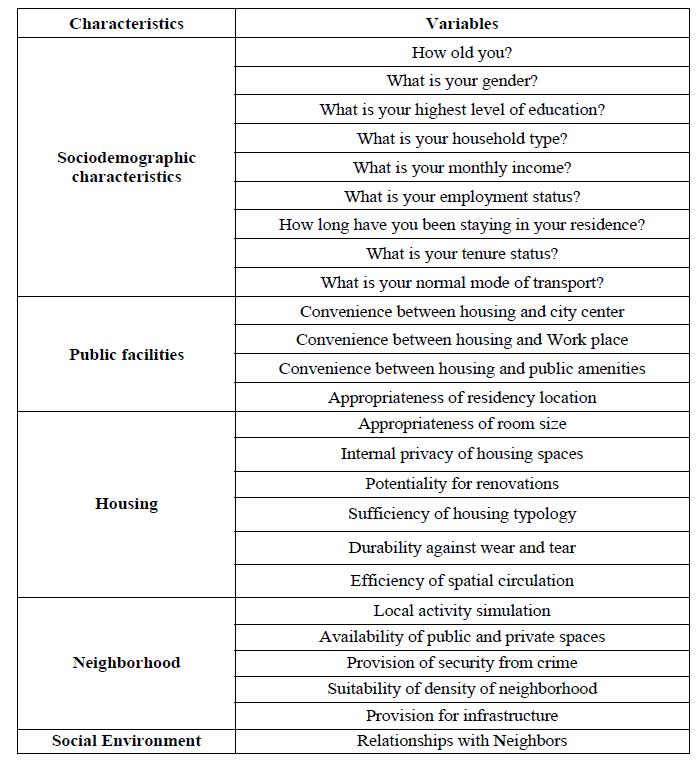
21
ANALYSIS OF ACQUIRED DATA
The data acquired was analyzed using Microsoft excel to determine the level of residents’ satisfaction regarding the factors affecting RS. Also, Descriptive analysis was used in SPSS software to depict the effect of factors on residents’ within different sociodemographic.
Residents’ perception of their housing conditions and features were observed and evaluated using a 5 point Likert scale represented below.

● Very satisfied (V.S) = 5
● Satisfied (S) = 4
● Neutral (N) = 3
● Dissatisfied (D) = 2
● Very Dissatisfied (V.D) = 1
Based on the limit that residents agree or disagree with the questions asked. Very satisfied represents a high level of satisfaction while very dissatisfied represents the lowest level of satisfaction
Sample table showing results of analyzed data
22
RESEARCH FINDINGS
23
RESEARCH FINDINGS

The demographic and socioeconomic characteristics of the respondents which include; age, gender, education, household type, income, employment etc. were used to determine the sociodemographic factors affecting RS.
Other factors which are housing characteristics, public facilities, neighborhood characteristics and social characteristics also have huge impact on residential satisfaction although these factors are perceived differently with residents of different sociodemography.
The analysis commenced by profiling respondent’s sociodemographic characteristics correlates to the research aim, objectives and main questions discussed in the first chapter. The quantitative data is being presented by bar charts, frequencies, and percentages
24
Process of how residents’ socio-demography affect other factors determining RS
Socio-demographic Characteristics

The variables under socio-demographic characteristics include:
● Age

● Gender
● Level of education
● Household type of respondents

● Monthly Income
● Employment status

● Duration of Stay
● Tenure Status
● Mode of transportation
25
Social Characteristics
The variable under socio-demographic characteristics include:
● Relationship with neighborhood residents
cross tabulation between age and social relationship with neighbors


Cross tabulation between residents’ duration and social relationship with Neighbors

26
Public Facilities Characteristics
The variables under public facilities include:
● Convenience between housing and city center
● Convenience between housing and work place
● Convenience between housing and public amenities
● Appropriateness of residency location
Cross tabulation between Employment status and convenience between housing and Work place
Cross tabulation between age and convenience between housing and city center

Cross tabulation between Employment status and convenience between housing and Work place


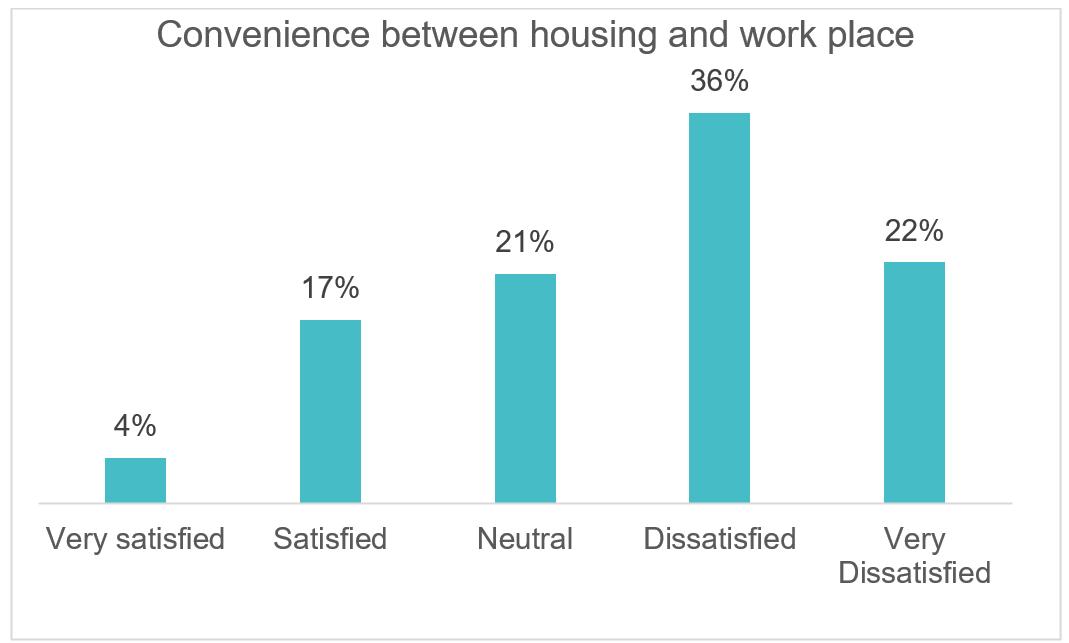
27
Housing Characteristics
The variables under housing characteristics include:
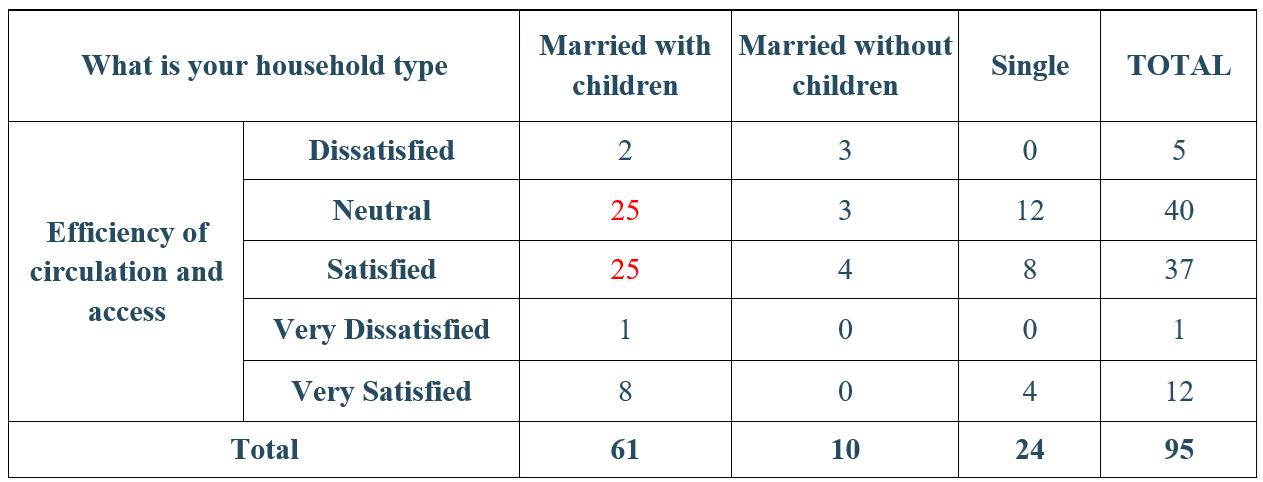


● Appropriateness of room size
● Internal Privacy of housing spaces
● Potentiality for renovations

● Sufficiency of Housing typology
● Durability against wear and tear
● Efficiency of spatial circulation
Correlation between potentiality for renovation and monthly income status
Correlation between residents’ duration and durability against wear and tear
Correlation between residents circulation and access with household types
28
Neighborhood Characteristics
The variables under Neighborhood characteristics include:

● Local activity simulation
● Availability of public and private spaces
● Protection of security from crime
● Suitability of Neighborhood density
● Provision of infrastructure
Correlation between local activity simulation and residency duration


Correlation between residents circulation and access with household types
Correlation between provision of infrastructure and monthly income

29

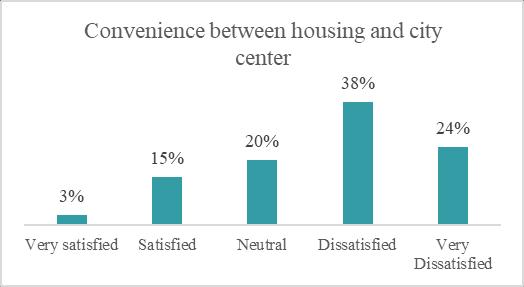
30
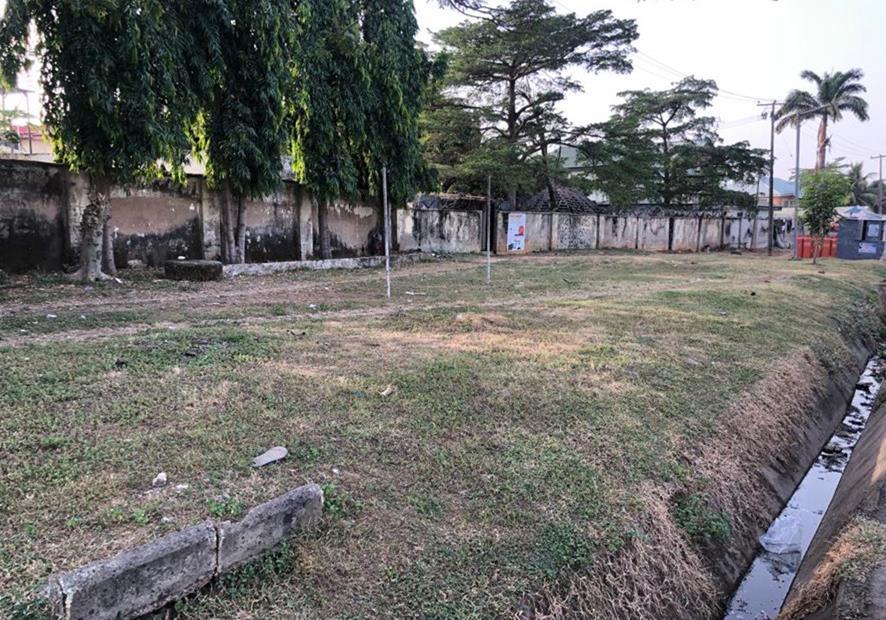

31

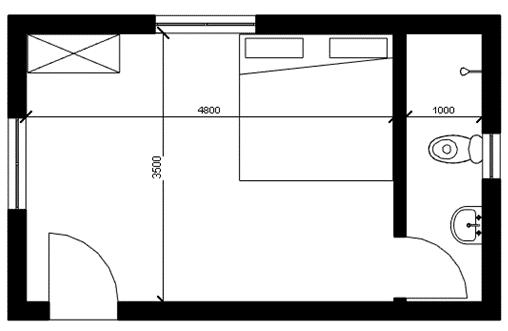
32


33
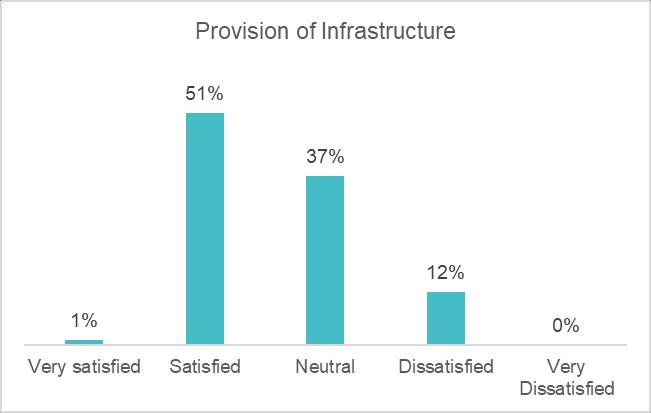

34
SUMMARY OF SURVEY RESULTS

35
DISCUSSION AND CONCLUSION
36
DISCUSSIONS AND CONCLUSION
The questions asked were discussed theoretically as the characteristics which affect residential satisfaction. Although this research believes that the sociodemographic characteristics is the driving factor amongst other characteristics in determining RS.
Summary
The focus of this study was on the evaluation of residential satisfaction in low-income housing estate developed by the Government in the capital city of Nigeria, Abuja. Due to the structure of the research, a door to door interview was used as the primary method of gathering data for where the satisfaction of resident’s was measured through use to questionnaires and interviews.
This study on residential satisfaction has shown the impact of residential determinants in achieving satisfaction in War College Housing Estate. The results of the survey show how the determinants of residential satisfaction affect the dwellers of War College Housing Estate. The theme of this research was viewed as one of the important indicators in improving the standard of living which is backed by the work of Jiboye, A. D. (2009).
Results
The results of this research give an insight on the aspects of housing were satisfaction is lacking. This can be used in future housing projects to implement more efforts into construction of better housing projects within Nigeria and other parts of the world.
The implications of decisions made by housing policy makers and designers in housing development is open to discussion and require further research.
37
REFERENCES
● Jiboye, A. D. (2009). Evaluating tenant’s satisfaction with public housing in Lagos, Nigeria. Town Planning and Architecture, 33(4), 239-247.
● Onibokun, A.G., (1974). Evaluating consumers satisfaction with housing: an application of a system approach. Journal of the American Institute of Planners Journal 40 (3), 189–200.
● Salisu, U. O., Odulaja, A. O., Ogunseye, N. O., Fasina, S. O., & Okunubi, S. A. (2019). Residents’ satisfaction with public housing in Lagos, Nigeria. Ghana journal of geography, 11(1), 180-200.
● Maina, J. J. (2021). Socioeconomic and Demographic Predictors of Residential Satisfaction within Public Housing Estates in Northern Nigeria. Covenant Journal of Research in the Built Environment, 9(1).
● Teck-Hong, T. (2012). Housing satisfaction in medium- and high-cost housing: The case of Greater Kuala Lumpur, Malaysia. Habitat Int., 36, 108–116.
● Abubakar, Babagana. (2020). Origin and Meaning of Abuja the Capital city of Nigeria.
● Salleh, A. G. (2008). Neighborhood factors in private low-cost housing in Malaysia. Habitat International, 32(4), 485-494.
● https://www.researchgate.net/profile/MuhammadPate/publication/262845907/figure/fig2/AS:213791246688262@1427983213393/Map-of-Nigerian-states-Colorsignifies-geopolitical-region_W640.jpg
● Aliyu, A. A., & Amadu, L. (2017). Urbanization, cities, and health: The challenges to Nigeria - A review. Annals of African medicine, 16(4), 149–158. 7
● Gbadegesin, Job Taiwo. (2017). “Towards an Effective Partnership Policy for Improving Urban Low-Income Housing Provision in Nigeria: New Institutional Economics Perspective.” International Journal of Construction Supply Chain Management 7, no. 3: 124-150.
● S. Gulyani, D. Talukdar, and E. M. Bassett, (2018). A sharing economy? Unpacking demand and living conditions in the urban housing market in Kenya, World Dev.
● D. R. Phillips, O. L. Siu, A. G. O. Yeh, and K. H. C. Cheng, (2005). The impacts of dwelling conditions on older persons’ psychological well-being in Hong Kong: The mediating role of residential satisfaction, Soc. Sci. Med., vol. 60, no. 1, pp. 2785–2797
38
39 Teşekkür ederim











































